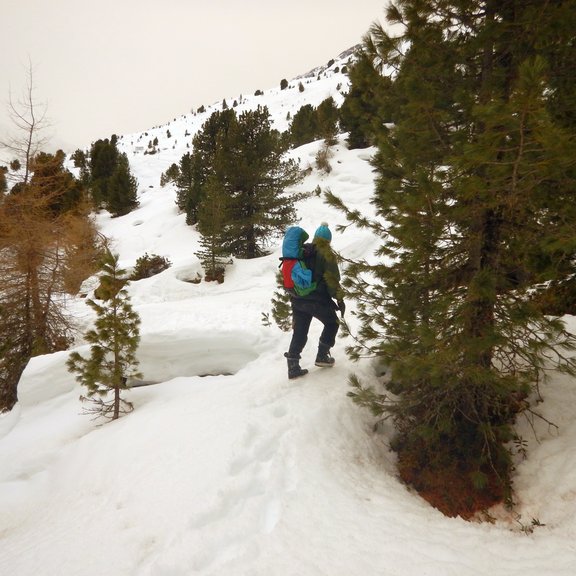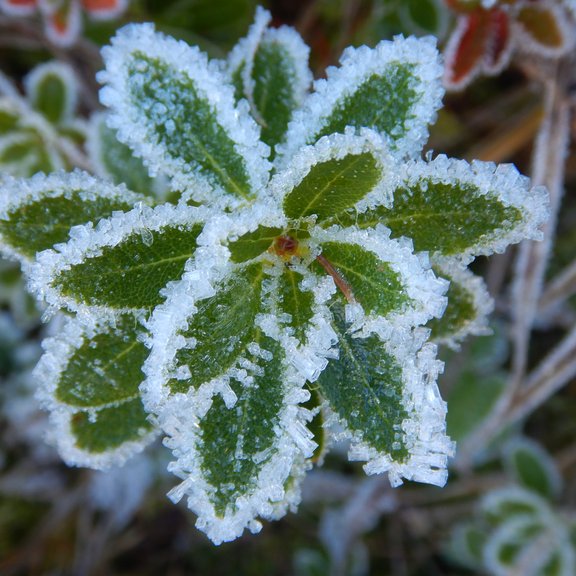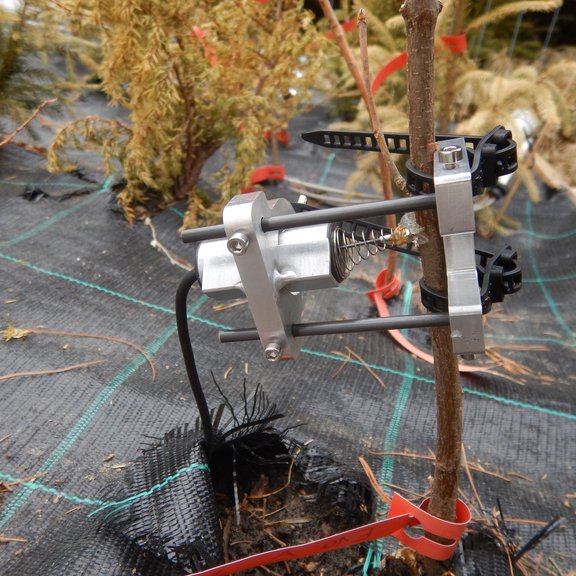Project
Acoufollow: Analyses of freezing induced xylem dysfunction and repair in shrub, conifer and deciduous trees
Project leader: Stefan Mayr
Project members: Andrea Ganthaler, Katline Charra-Vaskou, Carlotta Musso
Funding: FWF
Duration: 2021-2024
Freezing stress is the main factor limiting plant distribution at high latitude and elevation. Climate change will not only lead to changes in precipitation patterns and earlier snow melt but also to more climate extremes, which may cause increased winter drought and frost stress in woody plants. Frost has been shown to affect living and dead wood tissues and to impair their hydraulic function by induction of embolism. Embolism (air bubbles enclosed in the wood tissue) blocks water transport and thus impairs the water supply to the crown. Plants have to cope with such hydraulic limitation by repairing dysfunctional wood or forming new wood tissue.
Based on the project “Acoufreeze”, which focused on the processes and dynamics during ice formation in the wood, the project “Acoufollow” aims at a better understanding of how plants overcome wood dysfunction following freezing stress. The repair of freezing induced embolism will be studied in six contrasting model species (acer, larch, pine, juniper, mountain rose, mountain ash) both in controlled temperature chamber experiments and in the field. At high elevation field sites, monitoring under natural conditions and in snow manipulation experiments are planned. Analyses are based on ultrasonic acoustic emission and stem diameter measurements, wood core measurements and various complementary methods (wood pressure probes, infrared thermography, hydraulics, micrometeorology etc.). Here, the use of ultrasonic and stem diameter systems will be most challenging with respect to harsh winter conditions.
Experiments, numerical simulations and field monitoring are expected to unravel the complex spatio-temporal dynamics of wood pressure during freeze-thaw cycles and embolism recovery. Monitoring and snow manipulation approaches will enable to analyse embolism formation and repair under highly constrained environmental conditions and facing various snow depth situations. In consequence, relevant climate parameters will be linked to multi-decadal growth responses of study species to enable projections of future critical conditions for wood dysfunction and repair.
The project is based on a cooperation between UMR PIAF (INRA‐Université Clermont Auvergne, Clermont-Ferrand, France), Geolab (CNRS‐Université Clermont Auvergne, Clermont-Ferrand, France), the Department of Botany (University of Innsbruck, Austria) and Department of Botany (BOKU University, University of Natural Resources and Life Sciences, Vienna, Austria). The close cooperation of involved partners, which contribute expertises in different methodical and scientific aspects, will enable new insights into the underlying processes during and after freezing of wood and its relevance for plants under changing climate. Results will help to better understand freezing in study species and its relevance to plant life at high elevation, but also improve our knowledge of freezing tolerance and resilience of plants in general.

Sampling in the field

Rhododendron leaves with ice

Young tree with sensor
